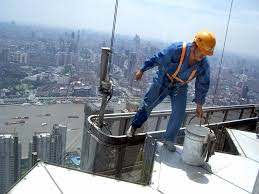In any industry with dangers of falls, falling objects, and the use of potentially dangerous equipment (e.g., construction, tree removal, roofing) you can’t take shortcuts when it comes to safety. Accidents can be devastating to employees and to your business. These are steps you can’t afford to avoid.
- Hire the right people
In your interviewing process, ask questions to determine how the job candidate feels about safety. If they’re inexperienced, they may not be able to be specific about it, but you can get a general sense of the value they place on safety. If they’re experienced and you can detect a laissez-faire attitude toward safety, then they’re probably not the right candidate.
- Train, train, and train some more
It’s essential that employees know how to use potentially harmful equipment in a safe manner. Even personnel who are acutely aware of the importance of safety will need training in their particular job’s safety measures. It’s not a one-off type of training. To reinforce your company’s safety policies, training should be provided on a regular basis. Ongoing required safety education keeps personnel reminded that safety is a top priority and keeps them up-to-date on how they can operate the most safely.
- Enforce the use of personal protective equipment
Provide the necessary PPE, and don’t look the other way if personnel aren’t using it. For example, if you let people slide on wearing hardhats, earplugs in noisy environments, or protective face coverings to protect against hazardous chemicals or excessive dust, that’s simply bad business and an invitation for all the negative consequences of workplace injuries.
- Identify and empower safety leaders
You need eyes and encouragement everywhere. If you have supervisors who know how to inspire safe behavior, make that a recognized part of their responsibilities. They can provide the motivation and direction that will keep people from getting hurt. Bad safety leaders can hurt your business.
- Inspect machinery to make sure it’s working properly.
The most safety-minded people can still be injured if the equipment they’re using malfunctions. If the brakes fail on a vehicle, you’re in trouble! In addition to safety, conducting regular equipment, vehicle, and facility inspections protects a business against the costs of downtime, equipment replacement costs, fines, and legal suits. Inspection checklists are what you need.
- Reward safety best practices
Consider “safest employee of the month” recognitions. Definitely include adherence to safety policies in employee evaluations related to salary. And, of course, do your best to reward effective safety leaders in their compensation.
- Work from the top down
It all begins at the top. If a company’s top management doesn’t value safety, then it won’t be a safe company.
Takeaway
Safety pays off. It protects people—and it increases profits. Without it, you face catastrophe. Top management needs to set the tone, safety leaders “in the field” need to be identified and rewarded for performing that role, Employees should be vetted for their attitude toward safety and rewarded for following safety policies. These points are true in any industry, but in high-risk industries, they are vital.











